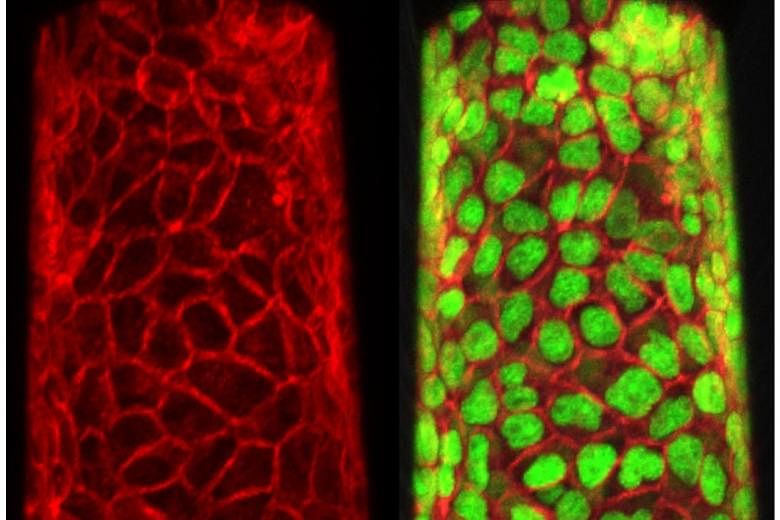The images show a cross-section of cell tissue, represented by its nuclei, in micro-tubular structures, such as blood vessels. Tissue behaviours are essential for the development of lumens, or the inside spaces of tubular organs. Researchers from the lab of Professor Lim Chwee Teck at the Mechanobiology Institute, National University of Singapore, studied how tissue cells move in micro-tubular structures and found that those in a smaller, highly constricted microtube move in a slower and periodically relaxed manner than those in a larger one. Understanding key processes in collective cell migration can give insights into how tissue cells organise themselves and take shape. It can also contribute to better tissue engineering of blood vessels. The study was published online in the Nature Communications journal on Nov 15.
Beautiful Science


Join ST's WhatsApp Channel and get the latest news and must-reads.
A version of this article appeared in the print edition of The Straits Times on January 11, 2018, with the headline Beautiful Science. Subscribe
